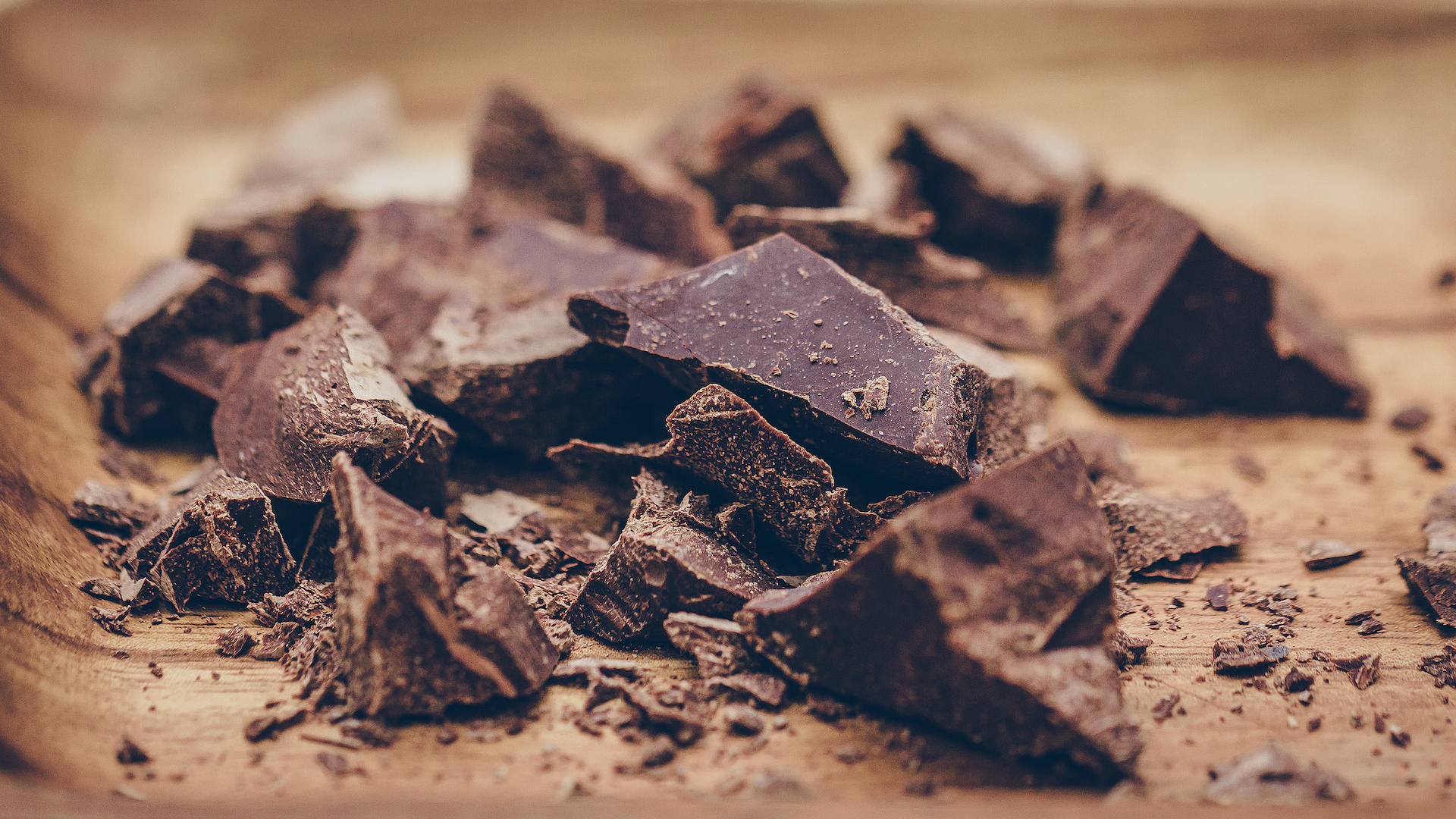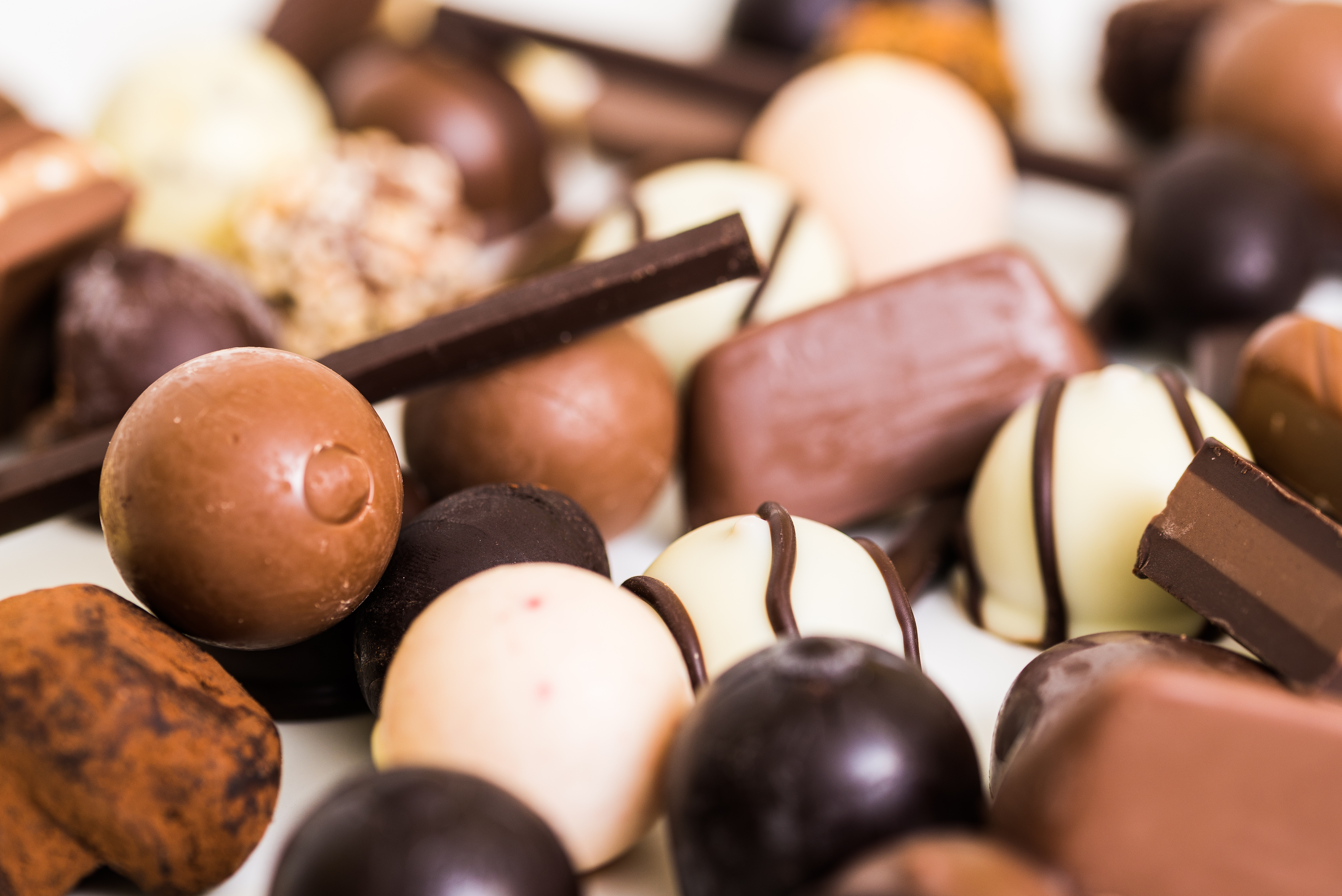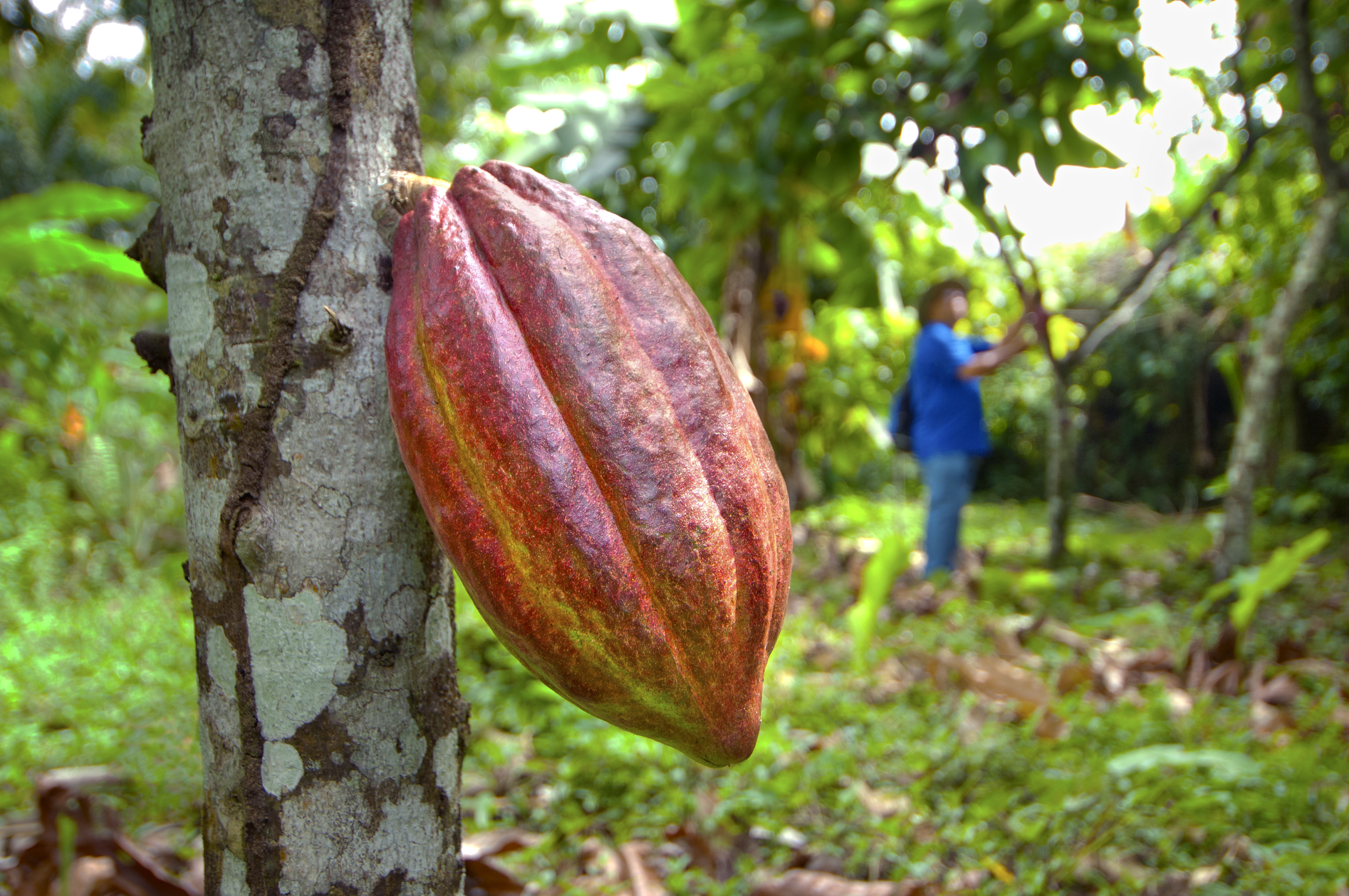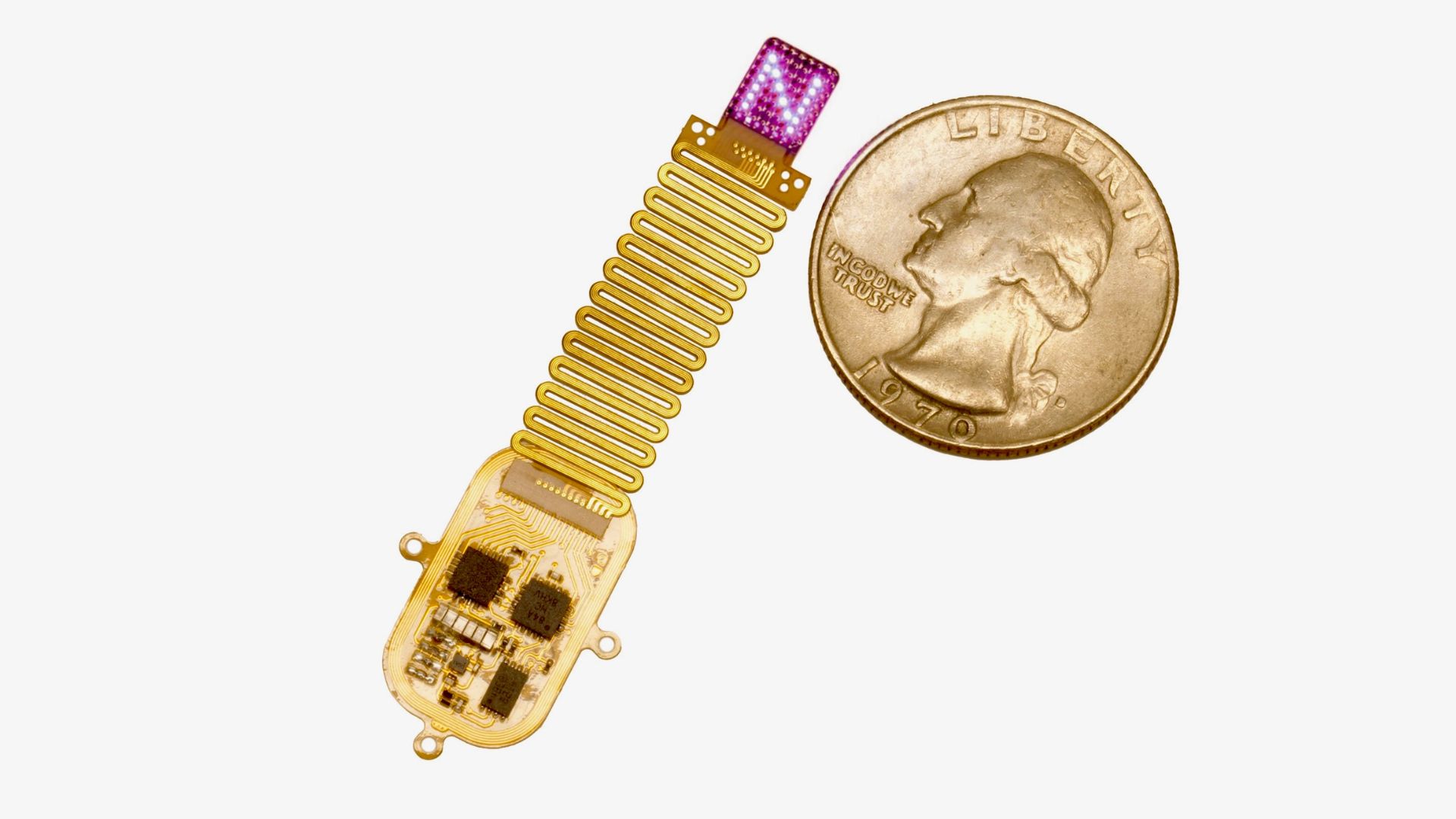Chocolate: History, types, production & other fun facts
What kind of magic do they put in chocolate, anyway?

Chocolate is a food product made from the fruit of a cacao tree (Theobroma cacao). Raw, unprocessed chocolate tastes bitter and dry, but chocolate that’s been fermented, dried, and roasted, and had a bit of sugar and cream added to it, tastes divine.
People around the world enjoy the decadent flavor of chocolate on its own and in an enormous variety of foods. More than half of all the chocolate we consume comes from West African countries, primarily Ghana and Cote d'Ivoire.
Related: 4 reasons chocolate is good for your health
What is chocolate made of? And how?
Chocolate is derived from the fruit of the cacao tree, which grows exclusively in tropical climates. The cacao tree is native to Central and South America, but once European invaders discovered the delicacy in the 18th century, the popularity of chocolate took off and farmers soon established plantations in other parts of the world, according to the book "The True History of Chocolate," by Sophie D. Coe and Michael D. Coe (Thames and Hudson, 2013). Today, Ghana, Côte d'Ivoire, Nigeria, Indonesia and Brazil account for around 80% of the world's cacao production.
Cacao trees bear fruit that are about the same size and shape of a football, according to the World Atlas of Chocolate. These lumpy berries, or pods, are full of up to 50 sour seeds, or beans, covered in white pulp. The pods are harvested by hand and cut open to remove the cocoa beans which are then placed in covered trays where they ferment for several days. After fermentation, the beans are uncovered and left out to dry.
Next, the beans are taken to the chocolate factory, where they are cleaned and debris is removed. The beans are roasted in large, rotating ovens. The roasting draws out flavor and removes the beans from their hulls. Roasted beans go into a winnowing machine, which cracks the beans and removes hulls. The remaining part of the bean is called the nib, and that's the piece that becomes edible chocolate.
The nibs are ground down under a series of rollers to create a thick paste called chocolate liquor. Chocolate liquor does not contain alcohol (chocolate liqueur does, however), and is the main source of unsweetened baking chocolate, said Pam Williams, co-founder and past president of the Fine Chocolate Industry Association (FCIA) and founder and lead instructor of Ecolé Chocolat Professional School of Chocolate Arts.
Get the world’s most fascinating discoveries delivered straight to your inbox.
At this point, chocolatiers have creative freedom to create chocolate to their tastes. According to the FCIA, ingredients separate fine chocolate from that of average quality. "Fine chocolate," as designated by the FCIA, contains only cacao liquor, cacao butter (optional), sugar, lecithin, vanilla (optional) and possibly milk fats and solids. Additional flavors or ingredients like nuts can be added later.
What are the types of chocolate?
Historically, fine chocolate falls into three main categories: dark chocolate, milk chocolate and white chocolate, Williams explained. Dark chocolate is made with chocolate liquor, cocoa butter, lecithin, sugar and vanilla. Milk chocolate includes the same ingredients as dark chocolate plus milk fats and milk solids. White chocolate is made with the same ingredients as milk chocolate, except it does not include the chocolate liquor.
The lack of chocolate liquor in white chocolate has led chocolatiers to debate whether it's truly chocolate. Until 2002, the U.S. Food and Drug Administration considered it a confectionary rather than chocolate because it does not contain chocolate liquor. The Hershey Food Corp. and the Chocolate Manufacturers Association petitioned the FDA, which added a standard of identity for white chocolate. Because the FDA refers to it as white chocolate, rather than confectionary, some experts, like Williams, accept white chocolate as chocolate.
In 2017, a fourth category of chocolate joined the list: Ruby chocolate. Barry Callebaut, the world's largest cocoa processing company, developed the pink-hued chocolate by adding a powder that's naturally extracted as the cocoa beans are processed to make chocolate. "We don’t add flavorings, we don’t add coloring, or additives: it’s purely coming out of this bean, and it's all natural," Peter Boone, chief innovation and quality officer for Barry Callebaut told The Guardian in 2017. According to its creators, ruby chocolate has a lighter flavor than milk chocolate and isn't as sweet, The Guardian reported.
Within each category of chocolate, the FDA also acknowledges several grades, Williams said. They include unsweetened or brute, which can be up to 99% chocolate liquor; bittersweet; semisweet; and dark milk chocolate. The type of chocolate depends on what ingredients are present and the percentage of cocoa, in addition to where the beans are from and the way they are prepared.
Is chocolate good for you?
For many years, physicians warned against eating too much chocolate – suggesting that its high fat content contributed to acne, caries, obesity, high blood pressure, heart disease and diabetes. However, in recent years, the discovery of antioxidant compounds in chocolate has changed this perception and stimulated research on its potential health benefits, according to a 2013 review published in The Netherlands Journal of Medicine.
Cocoa contains both healthy and unhealthy forms of dietary fat, and contains minerals important for human health, including potassium, phosphorus, copper, iron, zinc and magnesium.
Cocoa also contains high levels of flavonoids, chemicals in plants that are known for their health benefits in humans. Dark chocolate contains especially high amounts of flavonoids, which may be why chocolate consumption has been associated with a decreased risk of heart disease in recent years, according to the 2013 review. Some studies have found that regular chocolate consumption is associated with lower blood pressure, decreased stress levels and increased alertness. However, other studies have found no effect on those parameters with increased chocolate consumption.
Related: 10 antioxidant-rich foods to include in your diet
Some research suggests chocolate consumption may support brain health as well. A 2009 study published in the Journal of Nutrition reported that elderly people who ate chocolate regularly scored better in cognitive tests compared to those who didn't regularly consume chocolate. And a 2012 study published in the journal Neurology found that daily consumption of chocolate was associated with a decreased risk of stroke.
Studies that have found beneficial health outcomes related to chocolate consumption have focused on the consumption of dark chocolate, which has less sugar and fat content than milk chocolate, according to the 2013 review.
In addition, the studies looked at moderate amounts of chocolate consumption: no more than 2 ounces daily. Like many foods, chocolate is healthiest when eaten in moderation. The sugars and fats that are added to chocolate make it high in calories, which may lead to weight gain. Furthermore, many of the protective effects that chocolate may offer would be negated by overconsumption.
Who discovered chocolate?
Scientists debate how long humans have been using and consuming cacao beans. Chocolate's history goes back at least 2,000 years, while historians Sophie and Michael Coe, authors of "The True History of Chocolate," suggest that it might go back four millennia. The word chocolate can be traced back to the Aztec word "xocoatl," the name for a bitter drink made from cacao beans. This was the way chocolate was consumed until the Spanish conquistadors came to Central America.
Chocolate was a trendy drink for rich Europeans throughout the 18th century. The Industrial Revolution allowed chocolate to be mass-produced and brought the treat to the masses. The popularity led to the development of cacao tree plantations.
Enslaved people farmed most of the plantations. Initially, Spanish colonizers forced Mesoamericans to farm the cacao plantations, according to "The Biography of Chocolate" (Crabtree Publishing Co., 2005), by Adrianna Morganelli. When the indigenous peoples began to die in large numbers from diseases brought by Europeans, enslaved Africans were brought over to make up the labor shortage. In addition to sugarcane, indigo and other crops, enslaved Africans planted, maintained and harvested cacao trees throughout the Caribbean, Central and South America to feed the new European taste for chocolate.
In 1815, Dutch physicist Coenraad Van Houten experimented with removing varied amounts of the cocoa butter from chocolate liquor, according to Cornell University. This led to the creation of cocoa powder and soon solid chocolate.
In 1847, a Bristol, England, chocolate company, Fry's, created the first mass-produced chocolate bar when Joseph Fry added additional cocoa butter to Van Houten's chocolate, which turned it into a moldable paste, according to Bristol Museums. Milk chocolate was invented soon after with the help of Henri Nestlé, who went on to found the major food company that bears his name. Major European chocolate brands Lindt and Cadbury also got their start in the 1800s; Rodolphe Lindt invented the conching machine, which gives chocolate a velvety texture.
Related: Why is chocolate bad for dogs?
Mass chocolate consumption hit the United States in the late 1800s when Milton S. Hershey began selling chocolate-coated caramels. He then developed his own formula for milk chocolate, purchased chocolate factory equipment and introduced mass-produced chocolate bars and other shapes, like Hershey's Kisses, in 1900.
In 1923, the Mars Co. developed the Milky Way bar by putting nougat inside a chocolate bar. That same year, former Hershey employee H.B. Reese introduced Reese's Peanut Butter Cups, which later became part of the Hershey brand.
As the years progressed, chocolate concoctions from both small and large producers have became increasingly innovative.
Chocolate and climate change
Chocolate production is threatened by climate change. According to a 2016 report by the National Oceanic and Atmospheric Administration (NOAA), the primary cacao-producing countries of Côte d'Ivoire, Ghana, and Indonesia will experience a 2.1 degree Celsius (3.7 degrees Fahrenheit) increase in temperature by 2050. Rainfall will not rise along with the temperature, causing lowered humidity levels. As a result, viable land for cacao production will significantly shrink. According to the Intergovernmental Panel on Climate Change's Climate Change 2014: Impacts, Adaptation, and Vulnerability report, 89.5% of the 294 chocolate-producing locations studied would become less suitable by 2050.
Farmers and scientists are working to develop strategies to maintain chocolate production. Some farmers are planting taller trees next to cacao trees to increase shade and decrease moisture loss, according to the NOAA. Cacao plantations may also move to higher elevations with cooler temperatures and greater rainfall.
Genetic scientists are taking another approach. A January 2018 press release from the Innovative Genomics Institute announced a project to develop disease-resistant cacao. Condensing cacao plantations because of climate change could increase the spread of disease. The project will use CRISPR DNA-editing technology to make a heartier cacao seed.
Related: Can gene editing save the world's chocolate?
Chocolate production can also harm the environment. Farmers often clear forests to make room for cacao plantations. According to the World Wildlife Fund, about 70% of Côte d'Ivoire's illegal deforestation is related to cacao farming. One danger of deforestation is soil erosion, which can make land less fertile for cacao plants, creating a vicious cycle, Confectionary News reported.
Chocolate and slavery
According to Slave Free Chocolate, hundreds of thousands of children work in chocolate production in West African countries, where they are vulnerable to trafficking, slavery and other violent labor practices. The International Labor Rights Forum reports that these children are often exposed to chemicals, work long hours and are denied education.
Consumers who want ethical chocolate should look for certifications designating Fair Trade, Rain Forest Alliance, UTZ, and Fair for Life, according to Slave Free Chocolate’s guide to chocolate companies.
Additional resources
- Want to learn more about the science of chocolate? Check out the MIT Laboratory for Chocolate Science.
- Learn more about the history of the chocolate industry from the National Confectioners Association: The Story of Chocolate.
- Read more about the nutrition of chocolate from the Harvard School of Public Health.

Kimberly has a bachelor's degree in marine biology from Texas A&M University, a master's degree in biology from Southeastern Louisiana University and a graduate certificate in science communication from the University of California, Santa Cruz. She is a former reference editor for Live Science and Space.com. Her work has appeared in Inside Science, News from Science, the San Jose Mercury and others. Her favorite stories include those about animals and obscurities. A Texas native, Kim now lives in a California redwood forest.
- Jessie SzalayLive Science Contributor




